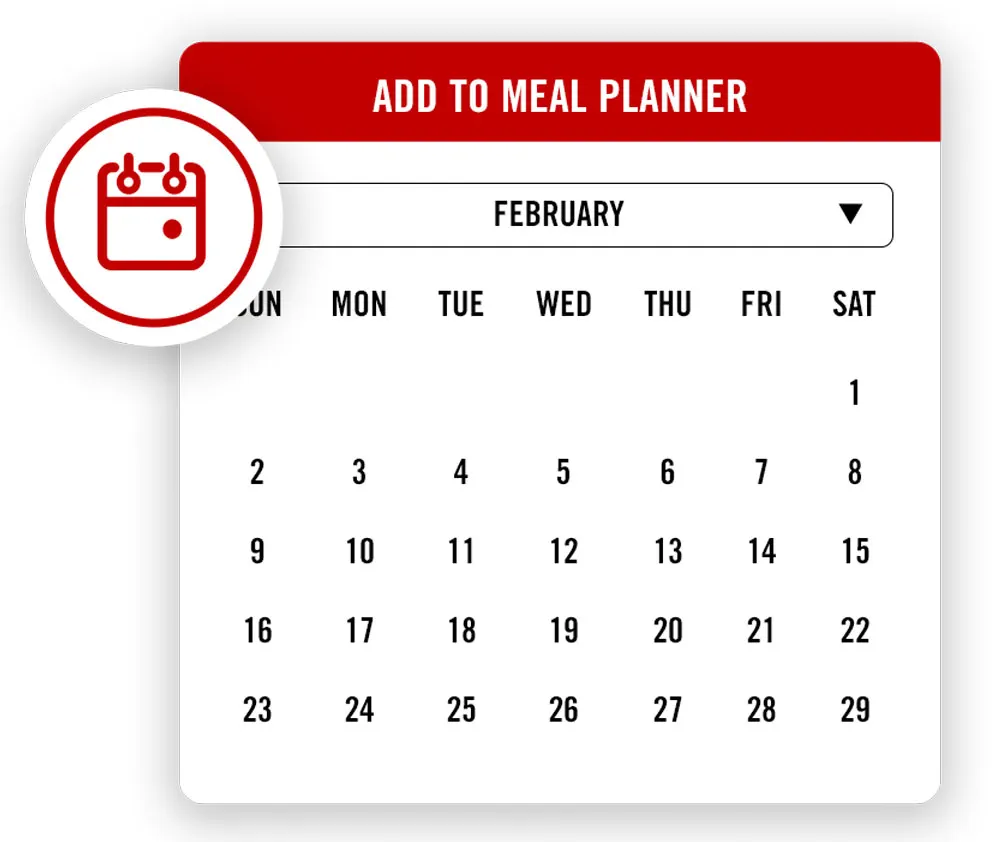Salads often double as dumping grounds. Half a head of romaine from a week ago? In. Some kale? In! Cherry tomatoes? Get in there! Celery? In! Chickpeas? In! Curry powder? In she goes!
But our Test Kitchen Chef Josh is delicate-footed with his valuable summer produce: Rather than close his eyes, toss everything in a bowl, and hope it works, he's figured out a salad schematic that will make one hero vegetable its very best self—that features it without manipulating it. So save kale salads and chopped salads for November; now's the time to cater your entire meal to one prime produce specimen.
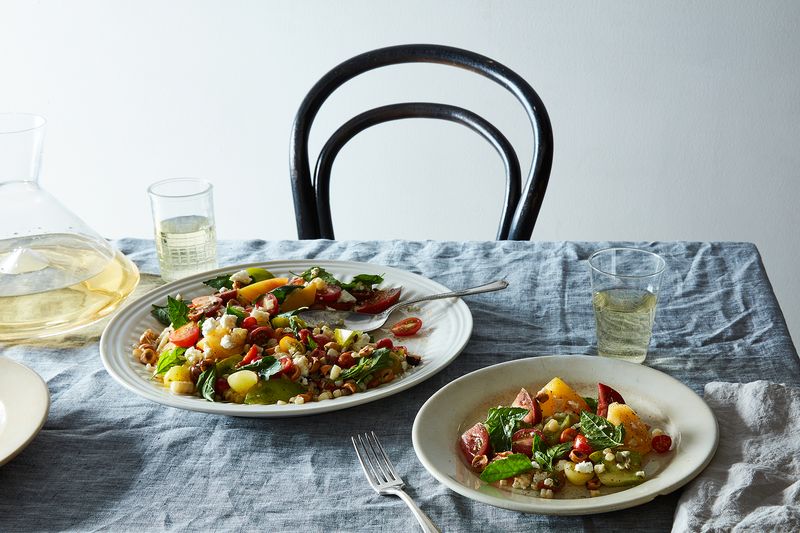
The general constituents of the salad—outlined below—remain the same, but within those categories, the ingredients can change.
- Hero vegetable (here, that's tomatoes)
- Something salty and fatty (feta cheese)
- Something for texture and toastiness (chopped toasted hazelnuts)
- A vegetable sidekick (charred corn)
- A leafy garnish (lamb's quarters)
- A sharp vinaigrette (sherry vinaigrette)
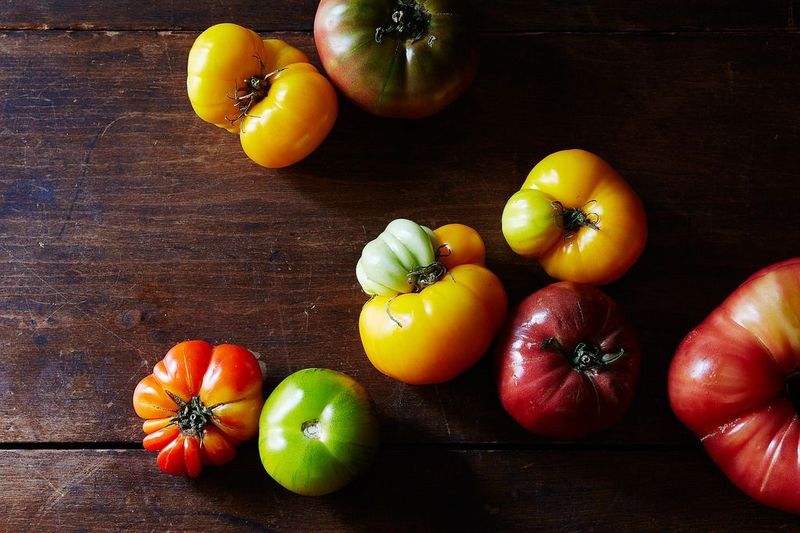
There you are, stars! Photo by Mark Weinberg
As you dream up your salad, keep these general principles in mind:
- A salad is like a balance beam, where you're trying to pair flavors, textures, and colors. If you have something sweet and mild (like a tomato), you'll want a salty, more aggressive cheese. If you have something soft with a tendency towards mush (hi there, eggplant), you might need to add extra crunch. If you have something raw, offset with something cooked. And if your salad is monochromatic—the buttercup-yellow of sweet corn—think about a punctuating color: torn mint, a topping of sliced cherry tomatoes.
- Season not only with salt and pepper, but with acid, too. Be it in the form of vinegar, lemon, or even white wine added at the beginning of the cooking process, acid is what keeps the dish interesting through the halfway point (and without it, you'll get bored). Josh thinks about acid at all points in the process: sprinkling sliced tomatoes with a few drops of sherry vinegar as he composes the salad, squeezing a lemon over seared zucchini as soon as it comes off the grill pan, or garnishing with purslane or sorrel, greens with a natural acidic element.
- Think about what you can take away rather than what you can add. Josh's method is to home in one ingredient (more on that below), then brainstorm 8 or 10 or 20 ideas for complementary flavors (like: corn and mint, corn and ricotta, corn and chile pepper, etc. etc.). Next, it's all about narrowing those ideas down so that the star ingredient will be at its absolute best.
And now, here's how Josh thinks through a summer salad from start to finish, along with a recipe that embodies his philosophy:
1. Key in on hero ingredient you’re inspired by.
Right now on the East Coast, the market is the most inspiring and exciting that it will ever be (unless you're a roots-and-hearty-greens fanatic).
But fight the urge to put all of the market produce in one salad and instead, prolong the bounty and focus on one hero: It will make your shopping list smaller (or at least make you more excited for dinner the next night), and it will also make it easier to focus in on one vegetable (here, Josh chose tomatoes) and the preparation techniques that will make it its best possible self.
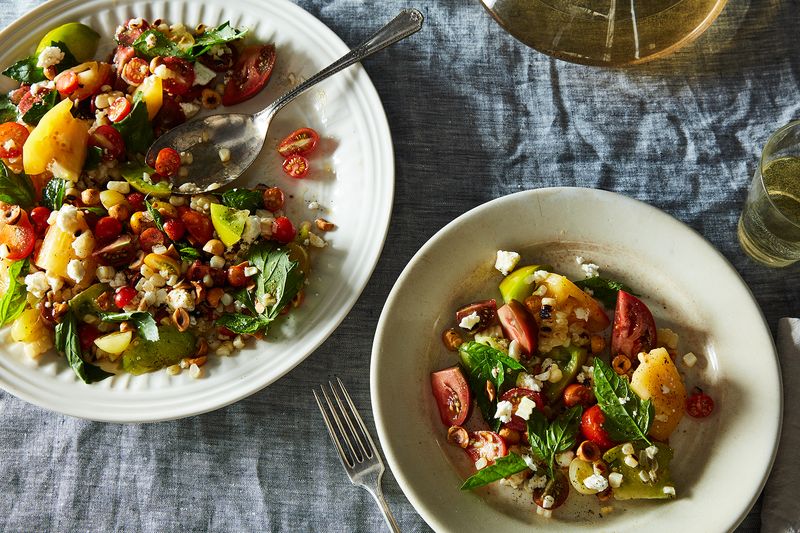
And because you'll ask: No, there cannot be two heroes. (Josh's rule, not mine!) But why? Reference principle 3, above: We're narrowing, not broadening. Working with two heroes—tomatoes and eggplant, say—will make it harder to tell a cohesive story and you also might have to treat the stars in different ways (roasting and marinating, frying and searing).
Which brings us to step 2...
2. Figure out how to get it to peak performance.
For Josh's tomato salad, that means slicing up heirlooms, seasoning them with salt, pepper, and olive oil, and letting them hang out for 30 to 45 minutes. It provides a fuller flavor than if you sprinkled them with salt and devoured them immediately, and it also draws the juices out (by the power of osmosis)—that flavorful tomato water will mix with your dressing and coat the other salad components.
This preparation will obviously vary based on your champion ingredient. Will it be cooked or raw? You might roast eggplant, sear zucchini, blanch green beans, shave summer squash, shred radicchio.
(And while there cannot be two heroes, there can be one hero with multiple preparations— shaved beets and roasted beets, raw zucchini and grilled zucchini—but that's getting into some advanced work).
Once you find a salad hero you're satisfied with (and inspired by!), you can keep that constant and change up the other parts at your will. For this tomato example, the technique of seasoning the sliced globes is, in Josh's words "an objective thing, a good way to treat raw tomatoes to make them taste good. The rest of the dish is more subjective."
That means that from here on out, it's time for fun!
3. Add a handful of something salty and fatty.
In this salad, that's crumbled feta. But it could be ricotta, burrata, mozzarella, goat cheese—something with a milky, savory vibe to counter tomatoes' sweet acidity. If eggplant is your star, you might consider a smoky cheese, like smoked mozzarella; if raw, sweet corn will be your foundation, you could choose something sharp and salty, like crumbled Parmesan. If your salad is going to be mild on a whole, you could even take a risk with a funkier blue cheese.
4. And toss in some crunch.
The hazelnuts in Josh's tomato salad are there primarily for texture and can be easily replaced with cubes of grilled bread, toasted bread crumbs, crispy fried shallots, or any other kind of nuts—pine nuts, toasted almonds or walnuts, pistachios. Even toasted quinoa would do the job.
5. Now for the vegetable sidekick.
An opportunity to introduce another color, texture, flavor. If your hero is cooked, add something raw (finely diced summer squash); if it's raw ...you get the idea.
Josh adds charred corn to his tomato salad—a cooked, smoky-sweet accompaniment to the raw, sour-sweet tomatoes. But he's also used seared-then-chopped zucchini or green beans. Since the tomatoes are a bit soft themselves, stick with a vegetable that will, in Josh's words, maintain its "al dente soul" even once it's cooked (eggplant might be a no-go in this case).
6. A leafy garnish, for frill and acidity.
With leaves as the accessory, there's less risk involved in exploring the zanier areas of the farmers market. Try bold-flavored greens, like purslane, watercress, lamb's quarters, sorrel, spicy mustard leaves, without fear of getting overwhelmed.
The only leafy item that Josh would be cautious of is a fresh herb with a very particular flavor—marjoram, for example—that might stage a coup and overtake the salad.
7. Finish with vinaigrette.
In Josh's salads, the vinaigrette is simple and light—either tossed with the green garnish and corn so it barely clings, or drizzled over the salad once it's been laid down.
Use whatever vinaigrette you favor; and if the flavors of the salad are bold and brash, you might even want to add a tablespoon of yogurt or tahini or buttermilk for a creamy soothing element.
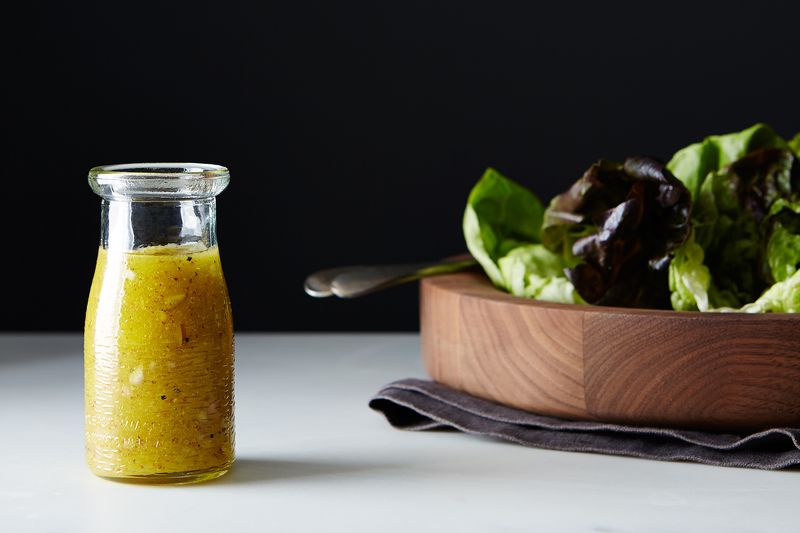
And, at the end of all that, the final product!
Tomato Salad with Grilled Corn, Feta, and Hazelnuts
By Josh Cohen
- 1 pint cherry tomatoes, plus one or two larger heirloom tomatoes (use a mix of colors and sizes if you can)
- 1 tablespoon olive oil
- 1 tablespoon sherry vinegar
- salt
- freshly ground black pepper
- 1 ear of corn
- 1/2 cup crumbled feta cheese
- 2 handfuls crushed toasted hazelnuts
- 1 bunch lamb's quarters (lamb's quarters is wild spinach, feel free to substitute your favorite tender leafy green.)
- 3 tablespoons your favorite vinaigrette (I prefer a homemade sherry vinaigrette)
And a couple other ideas, to get you started:
- Charred corn + crumbled Parm + tiny sourdough croutons + sliced cherry tomatoes + watercress + chive vinaigrette
- Silky roasted (or fried!) eggplant + smoked mozzarella + chopped roasted, salted almonds + quick-pickled peppers + mint and cilantro garnish (+ arugula) + lemony tahini vinaigrette
- Seared green bean + shaved Manchego + chopped pistachios + diced shallot + torn basil + balsamic vinaigrette
Tomato salad photos by James Ransom, who ate—and approved of—it.
This article was written by sarah jampel from Food52 and was legally licensed through the NewsCred publisher network.








